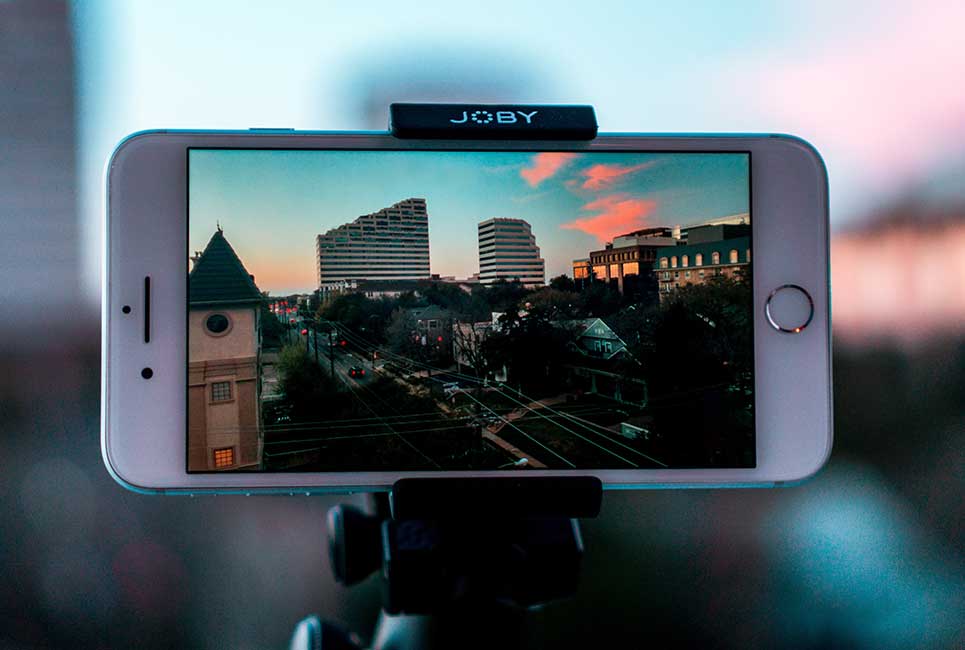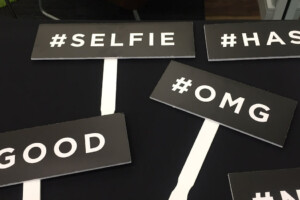
In days of yore, April Fool’s Day was about leaving glitter bombs on car seats and planting grass in colleagues’ keyboards. These days, it’s a marketing event glitzy enough to compete with the Super Bowl. Brands across the globe put their senses of humour to work in an attempt to win attention from a target demographic that just isn’t listening.
It’s been 12 years since Google launched its April Fool’s Day campaign, and it continues to gather a wider audience. The world’s favourite browser has reinvented the day, and every year marketing publications from Forbes to The Independent publish piece after piece about what Google pulled out of its hat this time. The brand has become such a ubiquitous part of April 1 that it’s featured on the April Fool’s Day Wikipedia Page. Take that, David Ogilvy. Even history’s most renowned copywriter didn’t manage to earn that much free brand exposure – but you can.
Nonsense and Sensibility: The 2015 Campaign
Google launched the prank ‘slow internet movement’, turned Google Maps into a Pac-Man game, and released yet another hoax app called Chrome Selfie. It merged two potent strategies into one: guerrilla marketing and video-based optimization. If you’re a small business owner with a budget small enough to cry over, it’s this combination that you need to be wielding to put your brand on the map (with or without Pac Man).

Guerrilla What?
Guerrilla marketing works because it’s absurdly cheap and easy to understand. All you need to make a campaign work is an overactive imagination.
It’s effective because today’s consumers have no patience for big budget advertising. In fact, they have no patience for anything that smells even vaguely of advertising.
Your promotions need to have an impact, but you needn’t hire Martin Scorsese to handle your video. Dropbox took itself from zero to 100 million users on the wings of a 2D explainer video and, four years later, its videos and graphics still haven’t deviated from that format. Why change what works? Google isn’t interested in Disney-worthy animation either. Why would it be when consumers aren’t?
How to “Video”
Fifty-two percent of marketers claim that video offers them a higher return on investment than any other medium, and it will account for 55% of all online traffic in 2016, so it pays to understand how to use it.
Subjective video quality has become a field of its own, unveiling the facets that resonate most with audiences.
Studies show that consumers respond well to unusual video elements like:
- Dim lighting or night scenes
- Bouncing images or handheld cameras
- Animation with scrolling text
- Ombre color effects
- Unusual shapes and moving patterns
- High color saturation
- Camera pans and zooms
You might have noticed that these elements are not on the list:
- Tom Cruise and Charlize Theron
- Oscar-worthy performances
- DreamWorks-style special effects
- A Pulitzer-worthy script
There’s a reason for that. The internet is the first medium in a century to have been invented for consumers instead of advertisers. This unusual characteristic has created a new era in modern marketing. Consumers are now notoriously distrustful of advertising because the internet is their turf, not that of Saatchi and Saatchi. The second they catch you trying to sell to them, you’ve lost them, so these days, your campaign needs to entertain, inform, and engage. The masses no longer listen to corporations, but customer influencers. For that reason, the only marketing of any value today must be consumed out of choice.
You don’t get sceptical buyers to consume your videos using the kind of direction that belongs on a Hollywood set. It’s stories that achieve that. Google has capitalized on the humble yarn to turn a simple search engine into a way of life. It has woven a giant patchwork quilt of tales across the web in the form of videos for every one of its global demographics. Seth Godin summarises this approach perfectly in his essay, Shouting into the Wind: “If enough people care, often enough, the word spreads, the standards change, the wind dies down. If enough people care, the culture changes.” People spend money only when what they’re buying is worth more than its price, and Google is a lifestyle with a personality all of its own.
Where Google Ends and You Begin: Fighting with Budgets
Small businesses typically solve their cash flow problems through direct response marketing: campaigns that call for a specific action, whether it’s subscribing to a mailing list or placing an order. In a way, there’s a method to their madness: If you try mimicking the big-budget-quality of brand titans like Google and Coca Cola, you will fail. Google and Dropbox have, however, demonstrated how branding can be done on a small business budget. Chrome might have the kind of marketing dollars you can only dream about, but it knows how to make its cents count.
In video marketing’s infancy, the suggested length for an explainer was two minutes, but Chrome has put its money on 15-second ads instead: A baby chews on a laptop, a dog swings on a hammock, and a man films himself shopping. These are not exactly videos worthy of Steven Spielberg’s directing smarts, but they work because they tell the Chrome story and appeal to emotion. There’s plenty of humor there, but primarily, Google has fed old fashioned branding through the modern-day media of digital video and gamification. It’s then repackaged all three and sent them out as a guerrilla campaign. In some cases, it didn’t even film its own visuals: it’s far cheaper to source and buy existing content as long as it serves your campaign.
Doing Video the Google Way
Appeals to emotion are one of the most effective ways to sell, and brands are now focusing as much on 2D animation as they are 3D because storytelling is far more important to today’s viewers than visual impact. This may be responsible for the rise in popularity of 2D—it’s far easier to develop a novel style with it than it is with 3D, and online viewers respond, not to a particular style or genre, but to pure novelty.
Facebook’s Auto-play Generation
Getting your audience to click ‘play’ is no longer the challenge it once was. In September, Facebook rolled out auto-playing videos, which have increased engagement and made storytelling far richer for marketers. Sound and sight are instantly and automatically engaged during browsing, and once the video has been played all the way through, a carousel appears introducing two additional adverts by the same marketer.
During the feature’s test run, KLLM Royal Dutch Airlines’ ad campaign was compared across Facebook and YouTube. Fans engaged with the YouTube version 300,000 times, but 350,000 on Facebook. The auto-play option will introduce a new era of native marketing, and advertisers will no longer have a choice as to whether or not to use this kind of strategy. There is simply no option. Competitive advantage just became harder to secure without video and guerrilla marketing.
Expanding from Concept to Campaign
Video lacks a certain longevity, so guerrilla campaigns benefit enormously from other media online and off. The “Dumb Ways to Die” campaign of a small train company developed a video that exploited two catchy elements: cute 2D characters and catchy music. Its cartoons did as their namesake suggested: demonstrate idiotic ways to die. To make sure their audience retained the information, they gamified the concept, rolled out a range of soft toys, and published a book. Taking guerrilla marketing into the offline world can be expensive, but it’s not always necessary if you expand your concept to mobile, tablet, and social media instead.
How to Run a Guerrilla Campaign in a Few Easy Steps
Assess your demographic. Not all target markets are responsive to guerrilla campaigns. They rarely put forward the corporate culture needed for regulated industries such as banks and insurance companies. Guerrilla campaigns depend on ruffling feathers, so make sure they fit your brand.
Tell your story. What is your brand? Who is your demographic? What culture do you want to portray? Most importantly, what do you have to offer your customers that is more valuable than the money they would need to spend on your product?
- If you had to communicate your essence in five seconds, what would you say? This is the core of your message.
- Guerrilla campaigns rely on press attention. With that in mind, conceptualise your campaign, making it edgy enough to win the interest of both customers and the media. The insights of a PR manager are useful at this stage.
- Make sure your campaign resonates and draws a response. Does it inspire, provoke laughter, or demand thought?
- Use a combination of media: games, mobile-based tactics, text-based content… you’re only limited by your imagination.
- Create a way to track your results. Constantly reassess and adapt your campaign to push up your return on investment.
- Guerrilla campaigns demand devoted customer follow-up. After they’ve made a buy decision, you need to make contact.
Search Engine Optimization
Even a guerrilla campaign needs to catch Google’s attention.
Decide where to host your video. YouTube works well for this kind of campaign because its intent is to entertain. Self-hosting gives you more control over your search engine results, so consider using Wistia and Vimeo Pro. These are paid services, but they link to your website, which may increase your return on investment.
-
- Choose keywords for your video file name, title, and the XML sitemap.
- Keep a tight rein on your comments section. It’s a unique opportunity to offer service and develop relationships with your potential clients while you identify your top customer influencers.
- Provide a video transcript if possible. This directs Google to your content via a wider array of keywords and keyword densities.
- Rich snippets, Schema.org markup language, and Geotagging localize your brand and attract search spiders.
- Create a strategy for building links that lead to your videos. Blogs, third-party sites, and Facebook are traditionally used, but if you’re going the guerrilla way, it will pay to think outside the box.
Dr James McQuivey of Forrester Research claims that one minute of video is worth 1.8 million words.
These are not just cat and baby videos.The average internet user sees about 32 videos every month, and 50% of C-suite execs watch business related videos at least once a week. Most click on the marketer’s site afterwards.
According to Forbes, 90% of customers say video helps them make buying decisions and 64% of customers say that seeing a video makes them more likely to buy. Are you rich and successful enough to afford not to have a video campaign?






